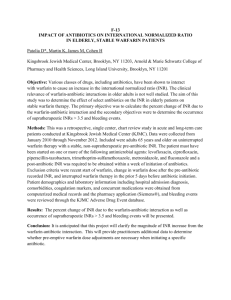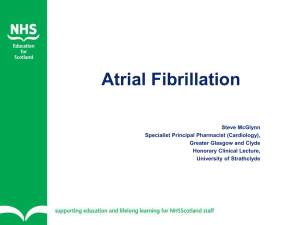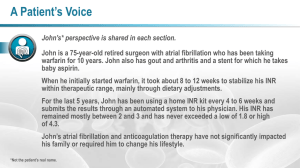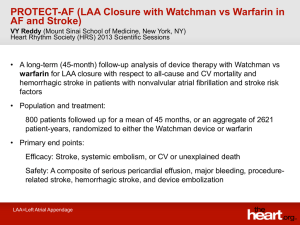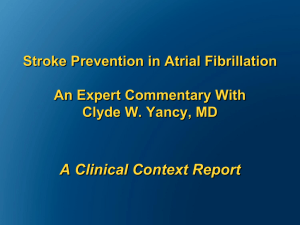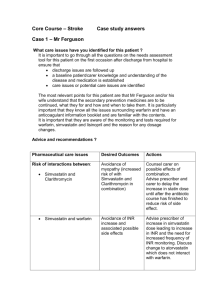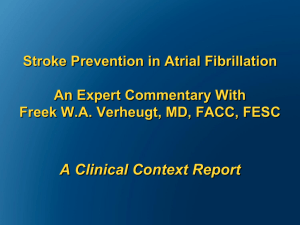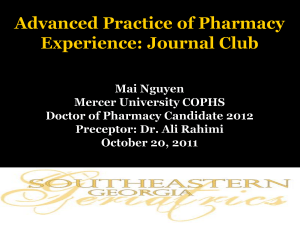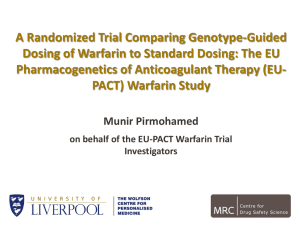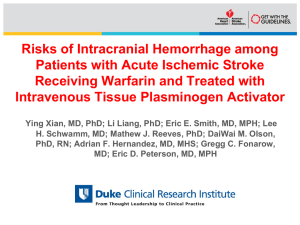Atrial Fibrillation In – Dabigatran et al
advertisement
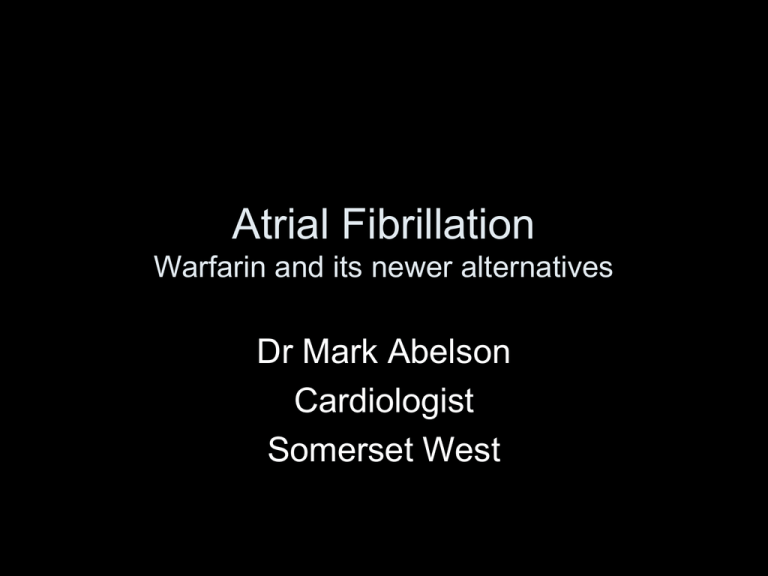
Atrial Fibrillation Warfarin and its newer alternatives Dr Mark Abelson Cardiologist Somerset West Association of AF and Stroke MM00453 (01) Intl 06/09 Occluded Left ICA-T Pre and Post Embolectomy 54y M, “Wake up” >4h,NIHSS=32 MRS=1 @ 90 d Carotid Embolectomy AF and Stroke Atrial Fibrillation and Stroke 3 million in US and 4.5 million in the EU have AF 2/3 of AF population are at high-risk of stroke AF is responsible for 15-20% of ischemic strokes AF Incidence increases with age -- 0.4% in general population -- 0.2% of 25-34 yrs of age -- 2-5% of >60 yrs of age -- 10% of > 80 yrs of age Relationship of AF and Stroke Risk Stratification and Annual Stroke Risk for Patients with AF Annual Stroke Risk for Patients with AF By CHADS(2) Score CHADS(2) Score CHADS Congestive heart failure +1 Hypertension +1 Age 75> +1 Diabetes Mellitus +1 Stroke or History of Cerebral Ischemia +2 20.0% 13.7% 15.0% 12.3% 10.9% 8.6% 10.0% 4.5% 5.0% 2.2% 0.8% 0.0% 0 1 2 3 4 F GAGE et al., 2004; 110:2287-2292 5 6 Clot Prevention Currently Available Management Options Medical Management: Anticoagulant Effective: 67% stoke risk reduction(1) Narrow therapeutic window for proper dose Contraindicated in 14-47% of patients at risk of stroke Major complication: bleeding Surgical Excision (Appendectomy) Residual shunt: 10% (3) Inconsistent outcomes due to incomplete exclusion; Can create pouch with stagnant blood flow (4,5) High invasiveness Transcatheter Device Closure Minimally invasive nature Designed for percutaneous closure of the LAA in prevention of clot embolization that may form in the LAA Intended as an alternative to warfarin therapy for patients with non-valvular atrial fibrillation (2) Warfarin Therapeutic Window - INR of 2 to 3 A small window: difficult to achieve a well controlled therapeutic range INR Control – Not Good Low INR <1.6 Efficacy 4-fold Therapeutic INR 2-3 High INR >3.2 0 20 40 60 80 100 % Bungard: Pharmacotherapy 20:1060, 2001 3000838-14 New Warfarin Alternatives • NO INR monitoring - Dabigatran ( Pradaxa) – direct thrombin inhibitor - Rivaroxaban (Xarelto) – F10a inhibitor • Aspirin plus clopidogrel • Aspirin (reduces stroke risk by 20%) Risk of Stroke or Embolism Connolly SJ et al. N Engl J Med 2009;361:1139-1151. Can’t Take Warfarin?? • • • • • • Frail, falls GI bleeds Cerebral bleeds Stroke despite therapeutic warfarin Non-compliant / labile INR (Do not want warfarin) 90% of clots in appendage Transcatheter Occlusion of the LAA Left Atrial Appendage Occluders Currently available in limited markets AMPLATZER® Cardiac Plug WATCHMAN® Protect AF – 21month F/U Vergelegen Experience • • • • 7 patients – all elderly men with Chads>2 Significant GI bleeds on warfarin Warfarin stopped – 2 had small strokes One INR very labile due to recurrent UTI (antibiotics. Suprapubic catheter) • All discharged next day – ASA and plavix for 1 month then ASA alone.

